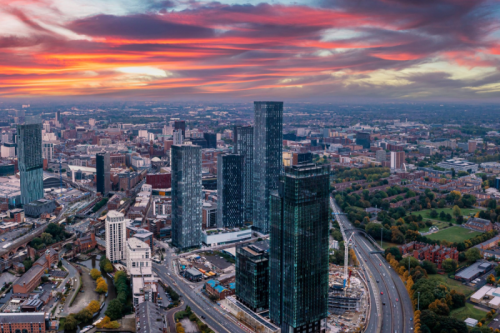Researchers at The University of Manchester have introduced a groundbreaking method to represent urban environments in global climate models. This advancement aims to provide a more comprehensive view of how cities both influence and are affected by climate change. The study, funded by the Natural Environment Research Council (NERC), emphasizes the need for intricate urban simulations in climate predictions.
New Modeling Approach Enhances Urban Climate Understanding
Historically, large-scale climate and Earth system models, such as the Community Earth System Model (CESM), have simplified urban areas into broad categories like “high density” or “medium density.” However, cities are complex, with diverse structures, vegetation, and human activities that can drastically alter heat dynamics. These factors often go unconsidered in current climate assessments and policy-making.
The newly developed model, published in the Journal of Advances in Modeling Earth Systems, incorporates a sophisticated urban classification system called Local Climate Zones (LCZ). This system categorizes urban environments into ten distinct types, ranging from compact high-rise districts to open low-rise neighborhoods, based on building height, layout, and materials. This nuanced approach allows for a more precise simulation of how urban areas exchange heat and energy with the atmosphere.
Dr. Zhonghua Zheng, the lead author and Co-Lead for Environmental Data Science & AI at the Manchester Environmental Research Institute (MERI), stated, “Cities, which host more than half of the world’s population, are highly vulnerable to the impacts of climate change, but they are also key to sustainable solutions. By using the Local Climate Zones approach, we can now represent the true diversity of urban areas, which is crucial for making accurate climate predictions.”
Improved Accuracy in Urban Climate Predictions
This innovative modeling approach has been tested across 20 urban observation sites worldwide, including locations in France, South Korea, the United Kingdom, and the Netherlands. Results indicate that the LCZ-based method enhances the model’s ability to simulate critical urban heat processes, such as how surfaces in cities release heat into the atmosphere and the heat produced by human activities, like air conditioning.
PhD researcher Yuan Sun remarked, “Incorporating LCZs into Earth system models provides a bridge for communication between the environmental model community and urban climate adaptation actors.” This connection is vital for developing effective strategies to mitigate urban heat stress and manage energy use.
Furthermore, sensitivity experiments within the study identified that rooftop reflectivity significantly impacts sunlight and heat retention in urban areas. The layout and architecture of streets and buildings, along with the materials used for roofs, also play crucial roles in urban heat dynamics. Understanding these elements can shed light on why certain city regions experience higher temperatures than others, thereby informing future urban design and climate adaptation initiatives.
The insights gained from this research underscore the importance of refining climate models to better reflect the complexities of urban environments. Improved simulation capabilities can ultimately guide policymakers in crafting more effective climate strategies that address the specific challenges faced by cities.
This pivotal research is expected to influence future climate modeling and urban planning, ensuring that cities can adapt more effectively to the ongoing challenges posed by climate change. The full study is available in the Journal of Advances in Modeling Earth Systems under the title “Enhancing Global-Scale Urban Land Cover Representation Using Local Climate Zones in the Community Earth System Model.”



































































